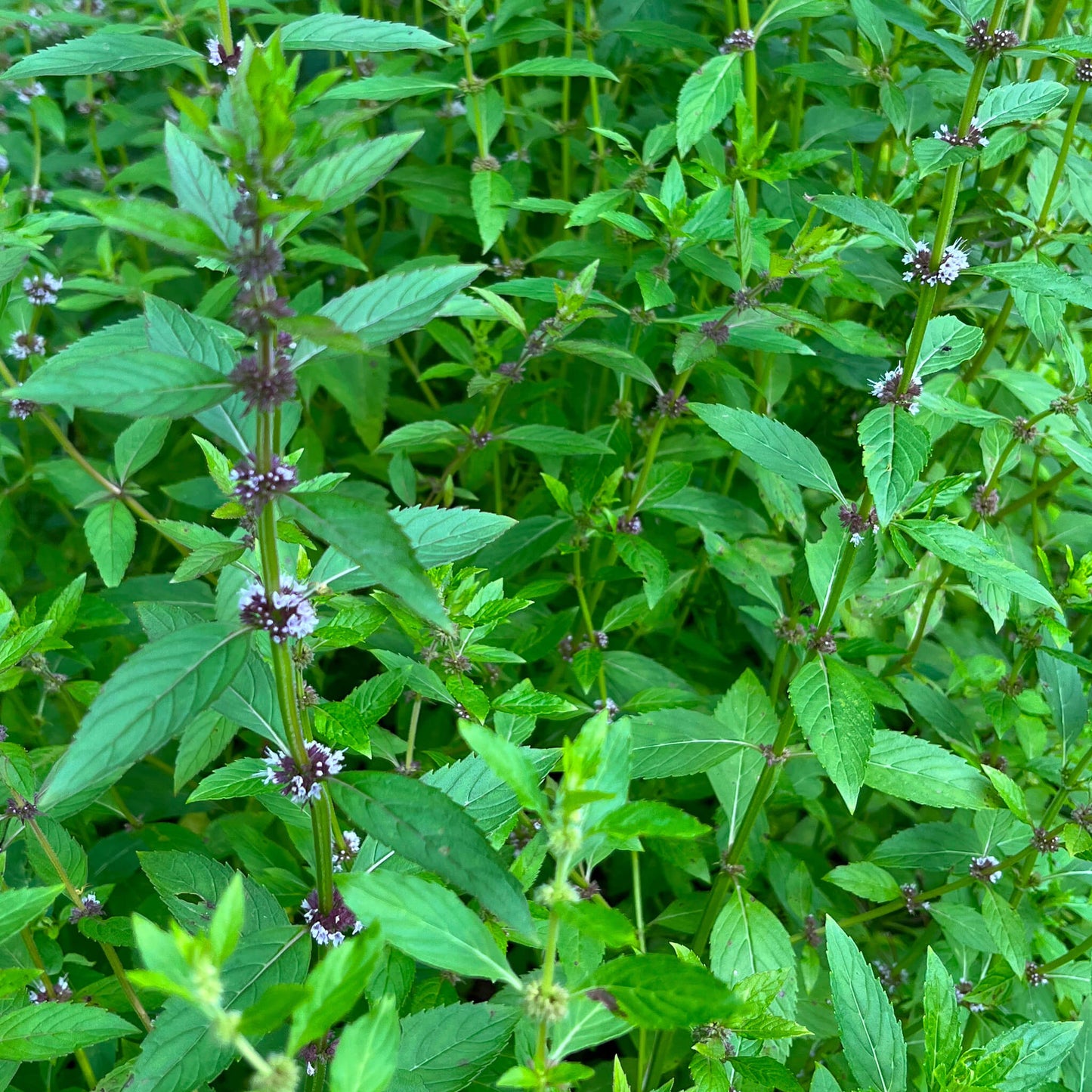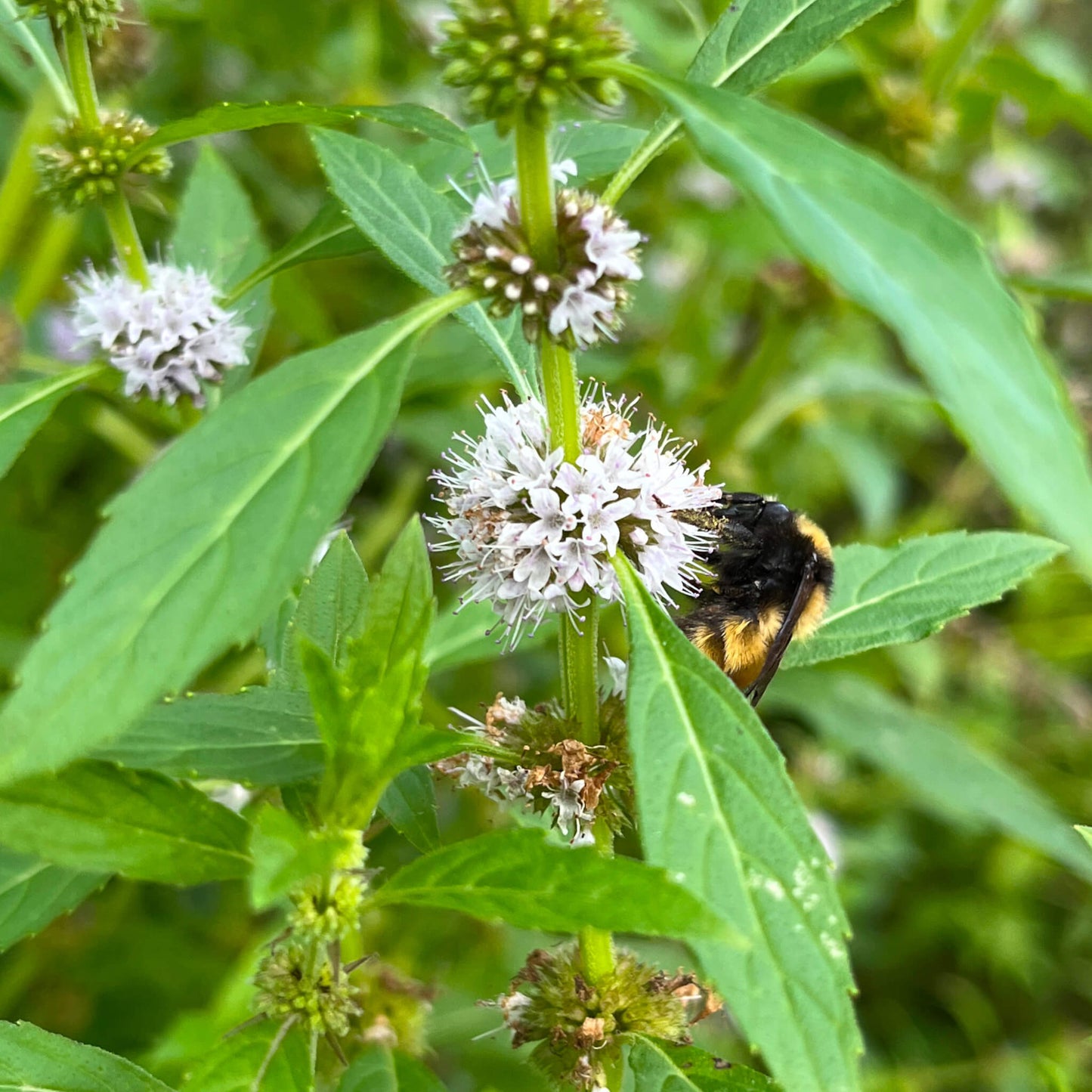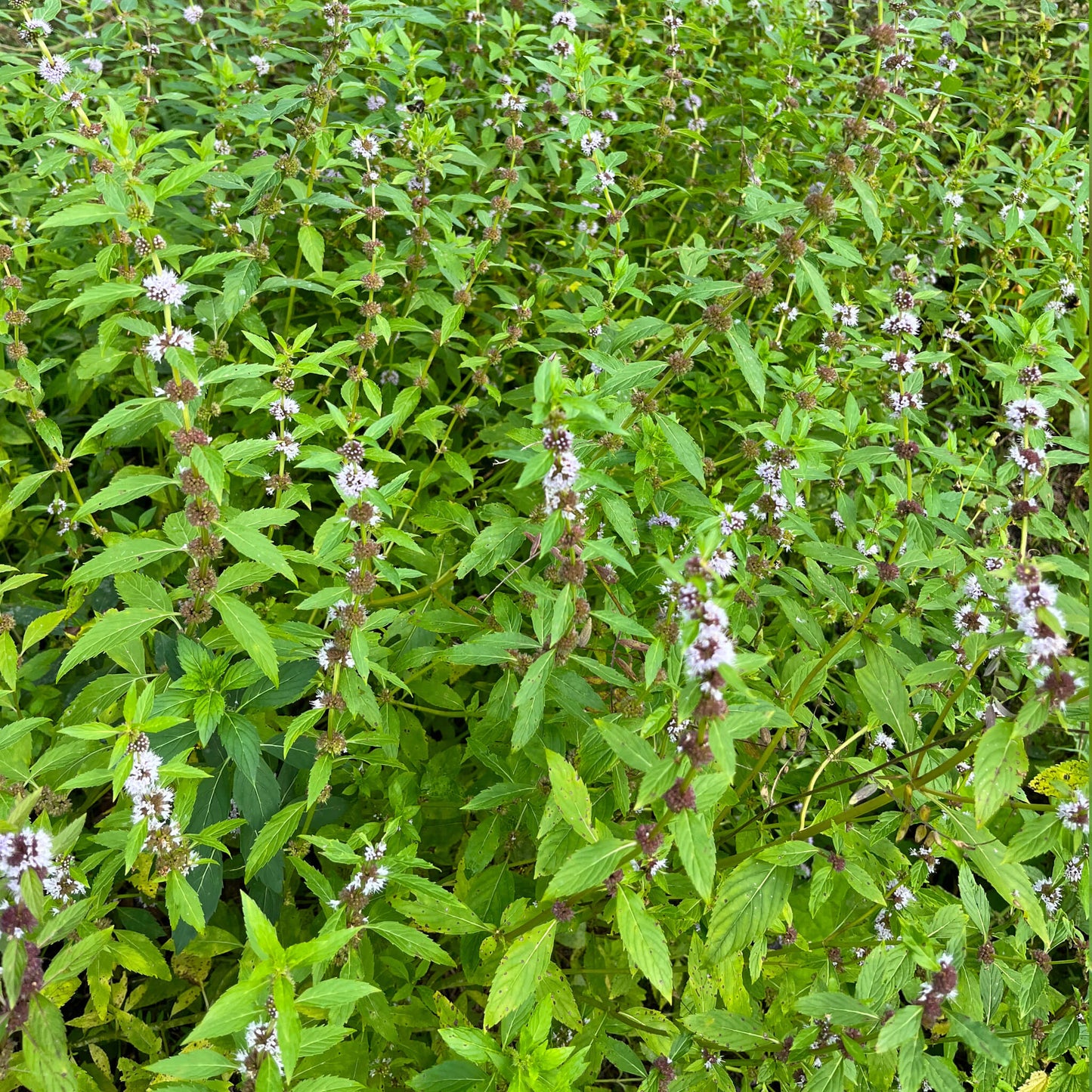This site is protected by hCaptcha and the hCaptcha Privacy Policy and Terms of Service apply.
For successful seedlings,
see the growing notes at the bottom of the page!
Canada mint (Mentha arvensis subsp. borealis, syn. Mentha canadensis) is the only mint species native to North America. This perennial plant has aromatic green foliage on square stems, typical of the Lamiaceae family, and produces purple or pink flowers arranged in small spheres at the leaf axils. Very versatile in cooking, it complements both sweet and savoury dishes. However, due to its invasive nature, it is advisable to grow it in containers or buried pots to control its spread. Canada mint is also an excellent choice for riparian buffer zones in Quebec, where it helps stabilize soil.
Canada mint (Mentha arvensis subsp. borealis, syn. Mentha canadensis) is the only mint species native to North America. This perennial plant has aromatic green foliage on square stems, typical of the Lamiaceae family, and produces purple or pink flowers arranged in small spheres at the leaf axils. Very versatile in cooking, it complements both sweet and savoury dishes. However, due to its invasive nature, it is advisable to grow it in containers or buried pots to control its spread. Canada mint is also an excellent choice for riparian buffer zones in Quebec, where it helps stabilize soil.
Medicinal and Culinary Uses
Canada mint offers important medicinal properties. Its leaves are digestive, carminative, stimulating, and mildly antispasmodic. In infusion, they are used to soothe stomach aches, aid digestion, and relieve bloating. Canada mint is also valued for its cooling and stimulating effects, making it beneficial against cold symptoms and mild headaches. In cooking, its fresh leaves add a minty flavour to various dishes, from salads and desserts to infusions and sauces.
Ecological Roles
Canada mint is highly attractive to pollinators, such as bees, drawn to its nectar-rich flowers. It plays an essential ecological role, particularly in riparian zones, where it helps stabilize soil and prevent erosion while providing food resources for local insects. By cultivating this native mint in gardens or naturalized areas, gardeners support local biodiversity and enjoy a plant with numerous benefits.
Canada mint offers important medicinal properties. Its leaves are digestive, carminative, stimulating, and mildly antispasmodic. In infusion, they are used to soothe stomach aches, aid digestion, and relieve bloating. Canada mint is also valued for its cooling and stimulating effects, making it beneficial against cold symptoms and mild headaches. In cooking, its fresh leaves add a minty flavour to various dishes, from salads and desserts to infusions and sauces.
Canada mint seeds benefit from cold stratification to increase germination rates. See the cultivation notes below for more details.
Akène cannot assume any responsibility for the use of plants for therapeutic purposes. Always seek advice from a professional before using a medicinal or edible plant.
Sowing and Growing
Technical Details
Seeds per packet: 50
Family: Lamiaceae
Scientific name: Mentha arvensis subsp. borealis (syn. Mentha canadensis)
Life cycle: Perennial
Hardiness zone: 3
Soil type: Loamy
Soil moisture level: Medium to slightly humid
Soil - additional attributes: Rich
Light: Sun, part shade
Blooming: July to August
Spacing: 45 cm
Height: 60 cm
Deer resistance: High
Stratification: 30 days (optional)
Scarification: No
Germination time: 10 to 20 days
Sowing depth: Surface



